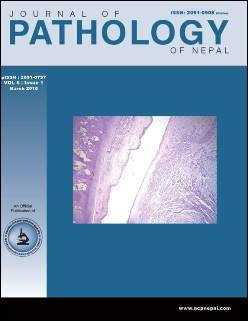Histopathological analysis of endometrial biopsies in dysfunctional uterine bleeding
DOI:
https://doi.org/10.3126/jpn.v6i11.15670Keywords:
Dilatation and Curettage, Dysfunctional uterine bleeding, HistopathologyAbstract
Background: It is estimated that 9-30% of women of reproductive age suffer from menorrhagia. Because most cases are associated with anovulatory menstrual cycles, adolescent and perimenopausal women are particularly vulnerable to this particular condition. The aim of this study was to evaluate the histopathological pattern of endometrial biopsy from patients presenting with dysfunctional uterine bleeding.
Materials and Methods: This is a cross-sectional observational study done in Nobel Medical College, Biratnagar, Nepal for a period of three years from June 2012 to June 2015. All the patients presenting with dysfunctional uterine bleeding and who underwent endometrial biopsy were included in this study. Distribution of various histopathological patterns was observed in the different age groups.
Results: A total of 300 cases were included in my study. The commonest pattern in these patients was proliferative endometrium 61 (%). The commonest pathology was simple cystic hyperplasia (13.3%). Other patterns identified were secretory endometrium, chronic endometritis and pill endometrium. Malignant lesion comprised of 8 (2.7%) of patients and the majority was in >50 years followed by in between 41-50 years of age. Atrophic endometrium was the commonest finding in post menopausal bleeding, comprising of 11 cases (3.6%), followed by endometrial carcinoma of 8 cases (2.7%).
Conclusion: As observed from the study, there is an age specific association of endometrial bleeding, with highest incidence in perimenopausal age group. Hence, dilatation and curettage is helpful for diagnosis, to assess therapeutic response and to know the pathological incidence of organic lesions in cases of dysfunctional uterine bleeding.
Downloads
Downloads
Published
How to Cite
Issue
Section
License
This license enables reusers to distribute, remix, adapt, and build upon the material in any medium or format, so long as attribution is given to the creator. The license allows for commercial use.




